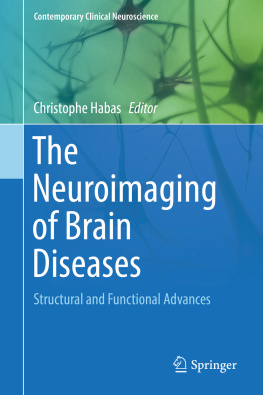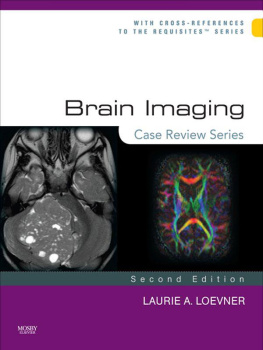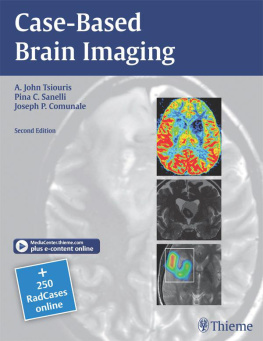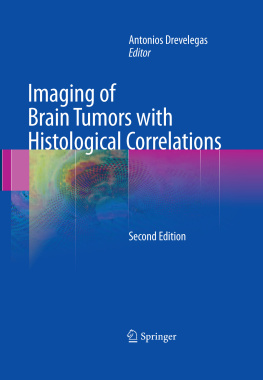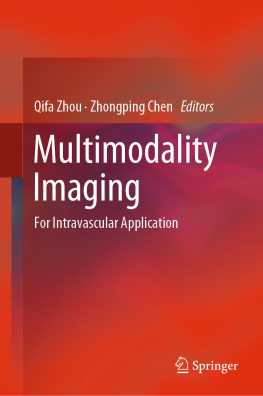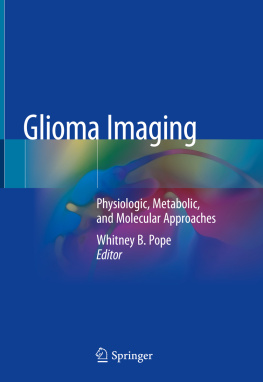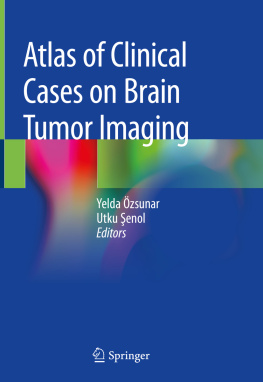Imaging the Aging Brain
William Jagust and Mark D'Esposito
(p.iv)

- Oxford University Press, Inc., publishes works that further
- Oxford Universitys objective of excellence
- in research, scholarship, and education.
- OxfordNew York
- AucklandCape TownDar es SalaamHong KongKarachi
- Kuala LumpurMadridMelbourneMexico CityNairobi
- New DelhiShanghaiTaipeiToronto
- With offices in
- ArgentinaAustriaBrazilChileCzech RepublicFranceGreece
- GuatemalaHungaryItalyJapanPolandPortugalSingapore
- South KoreaSwitzerlandThailandTurkeyUkraineVietnam
- Copyright 2009 by Oxford University Press, Inc.
- Published by Oxford University Press, Inc.
- 198 Madison Avenue, New York, New York 10016
- Oxford is a registered trademark of Oxford University Press
- All rights reserved. No part of this publication may be reproduced,
- stored in a retrieval system, or transmitted, in any form or by any means,
- electronic, mechanical, photocopying, recording, or otherwise,
- without the prior permission of Oxford University Press.
- Library of Congress Cataloging-in-Publication Data
- Imaging the aging brain / edited by William Jagust, Mark DEsposito.
- p.;cm.
- Includes bibliographical references and index.
- ISBN: 978-0-19-532887-5 (alk. paper)
- 1.Geriatric neurology.2.BrainImaging.3.Alzheimer's
- diseaseImaging.4.BrainAging.I.Jagust,
- William.II.DEsposito, Mark.
- [DNLM: 1.Brainphysiopathology.2.Diagnostic Imagingmethods.
- 3.Agingphysiology.4.Dementiaphysiopathology.
- WL 141 I3156 2009]
- RC346.I43 2009
- 618.9768dc22
- Printed in the United States of America
- on acid-free paper
Dedication
(p.v) To Robyn
William Jagust
To Judy, Zoe, and Zack
Mark DEsposito (p.vi)
(p.vii) Preface
William Jagust
Understanding the mechanisms of normal brain function is intimately involved with understanding its dysfunction. While molecular approaches have yielded major insights into many age-related diseases, other ways of understanding the brain play an equally important role. This is particularly true in brain aging, a situation in which no single molecule or even groups of molecules can explain an entire phenomenon. Brain aging has come to be defined as a heterogeneous process that affects some systems and spares others. Furthermore, these patterns of involvement vary from individual to individual. While there are no doubt underlying molecular mechanisms that define both vulnerability and damage, our current state of knowledge is so rudimentary that we are still defining phenotypes, behavior, longitudinal change and thereby focusing gradually on potential molecular targets. But we have a long way to go.
In this situation, it has occurred to many people that brain imaging has a great deal to offer. The past decade has seen an incredible explosion of interest in brain imaging as it is applied to aging and disease. Clearly, as described in Chapter , this has much to do with fundamental advances in technology and the diffusion of this technology into the research community. But there are also fundamental reasons, based on the types of information that imaging can bring to bear, that this technology is so appealing. It is interesting to think about how broad brain imaging is in terms of traditional areas of biology: it spans biochemistry (or neurochemistry), neuroanatomy, and neurophysiology. These different levels of analysis can be brought to bear at relatively high spatial and temporal resolution (changes in sub-hippocampal brain activity occurring in milliseconds) or low spatial and temporal resolution (whole brain volume atrophy occurring in years). These measurements can resolve system-level processes, sub-system component processes, or whole brain measures.
This volume is meant to provide the reader with a representative sample of the questions, methods, and technologies that a number of leading laboratories have applied to the study of brain aging. We believe that it is a timely compendium in view of the growing interest in the field, and the large number of new investigators who have been drawn to the study of aging using imaging technologies in recent years. The information is meant to provide a context in which to interpret the rapid and accelerating pace of new findings that may be hard to fully appreciate without the relevant background. As such, we think this book will be especially interesting to newcomers to the field of brain aging but we also hope it becomes a landmark in defining the current state of our knowledge for those working in the field.
As such, we have endeavored to span problems that could be considered both basic and applied. Basic science sections are concerned with laying out the patterns of brain changes seen in different brain systemsboth anatomical and chemicaland in defining underlying mechanisms of compensation, change, and vulnerability. The Clinical sections are more focused on the detection of decline and prediction of disease, but as a reader will soon see, questions of disease and normal aging are no longer as easy to separate as they once might have been (if they ever truly were). We hope that readers who work in applied fields will explore the basic chapters, and that basic scientists will read through the clinical sections. Too often, the approaches of one group have been ignorant of the concepts and methods of the other.
There is no doubt that one of the major forces at work in shaping the book has been the importance and interest in Alzheimer's disease (AD), the most common cause of age-related cognitive decline and dementia. This is not only a result of the enormous public health concern about this disease but also because many of the problems in relating age-related change to AD have become tractable with the advent of new imaging approaches. But we would like to stress that this book is not meant to be an exploration of the diagnosis or early prediction of AD. Changes in brain structure, biochemistry, and function are far more heterogeneous and, as a reader of Chapter will quickly determine, aging without AD has significant molecular and structural consequences. The importance of degeneration of frontal and subcortical systems, the importance of brain dopamine, and the importance of vascular disease are other themes that are repeated throughout the book. These may interact with AD, but they are also clearly separate and can be differentiated with imaging.
The process of preparing this book was very enjoyable for the editors. We were able to interact with colleagues in conceptualizing the contributions, and we learned a great deal by reading and editing the chapters. These research groups are all at the forefront of the use of imaging technologies, and have lead the way in the application of imaging to problems of the aging brain. We think that the thoughtful and encyclopedic contributions will be informative and maybe even inspirational to all of us. (p.viii)


